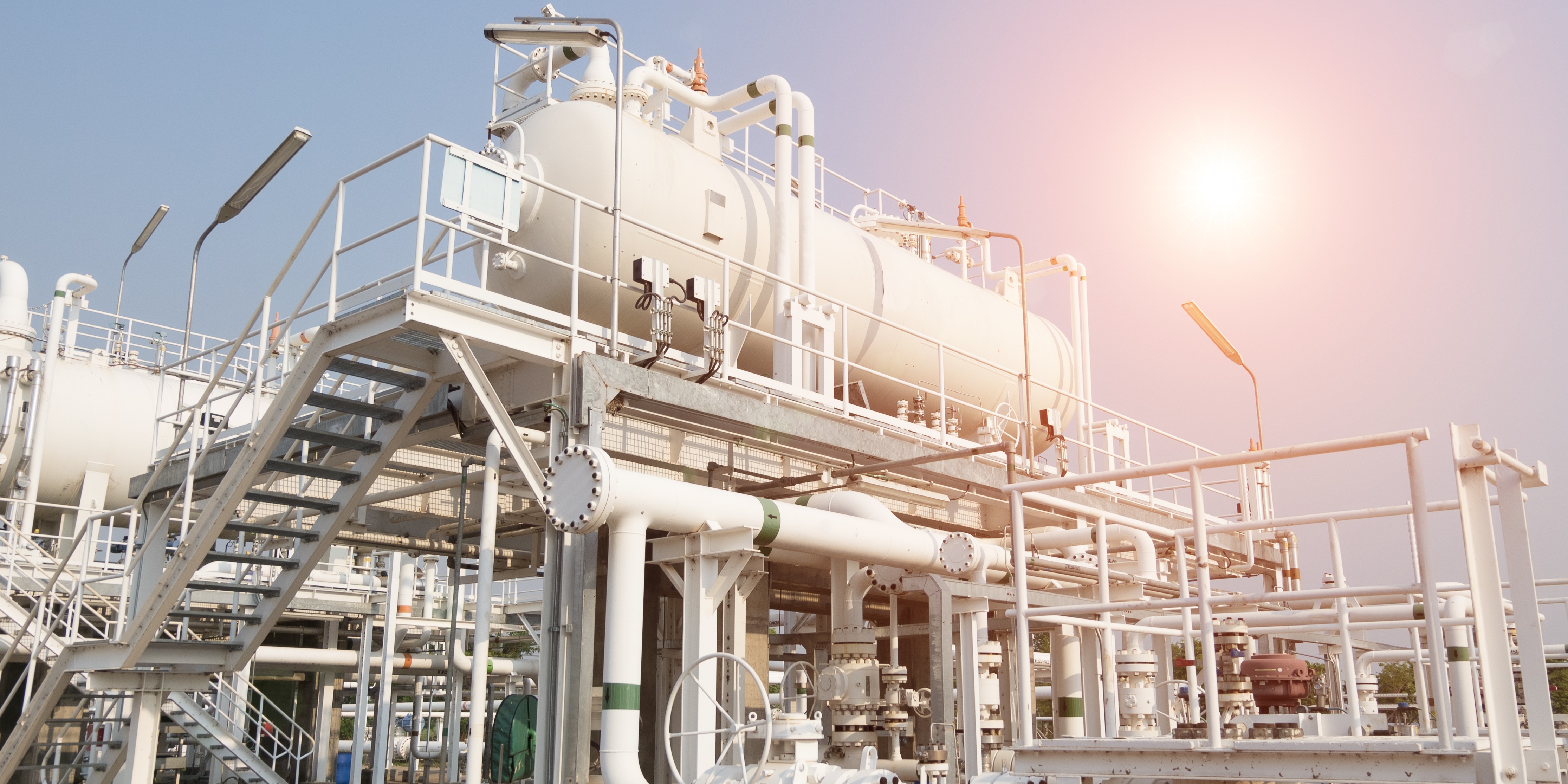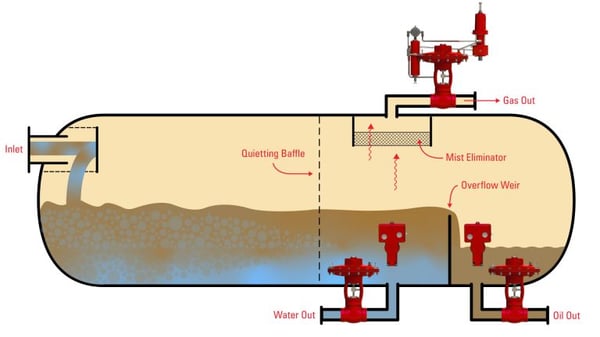The Process System Performance Blog
Where engineers share and learn about
optimizing oil production and processing

How Does an Oil and Water Separator Work in Oil and Gas Production?
An oil and water separator is the heart of the upstream process operations in oil and gas production. Without the separator you simply cannot produce oil and gas in a cost-effective manner. Therefore, understanding how the separator works, but also the value it can contribute to your oil production is crucial to maximize the oil production and reduce the upstream processing costs.
What is an oil and water separator?
An oil and water separator is a cylindrical or spherical vessel/tank used to separate water, oil, gas and sediment from the fluid stream produced by one or multiple oil and gas wells. Separators can be either horizontal or vertically shaped and are classified into two-phase and three-phase separators.
The two-phase separator only separates oil and gas, while the three-phase separator handles oil, water and gas.
You can also categorize separators based on operating pressure. There are three pressure levels defined: low, medium and high pressure.
- Low-pressure units handle pressures of 10 to 180 psi
- Medium-pressure units handle pressure of 230 to 700 psi.
- High-pressure units operate from 975 to 1500 psi.
How does an oil and water separator work?
The main purpose for an oil and water separator is to separate oil from water by speeding up the process, or what is called the residence time, compared to letting the fluids separate naturally.
Residence time: The time it takes for oil and water to separate. It is determined by dividing the liquid volume inside the separator tank by the liquid flow rate.
During oil production the fluid stream from one or more oil wells is gathered in a separator. This stream consists of oil, water and gas. The composition of these elements can vary from stream to stream, and over time. In today’s oil and gas production the separator is designed to separate the stream into oil, water and gas as fast as possible.
The water is a by-product which is disposed of, while the oil and gas is sold to third parties for further use.
Suggested reading: How to Increase Oil Production by Utilizing Your Oil and Water Separator Better
How is an oil and water separator designed?
You can design oil and water separators in different ways. The space available, the components and instrumentation chosen, and if it is vertical or horizontal plays a role here.
There are however 10 main components you will find in most three-phase separators. These are:
- An inlet where the fluid stream coming from the oil wells enters the separator. This is typically located in the pre-separation zone of the separator
- An inlet diverter or inlet device to control the direction of the fluid stream entering the separator
- A separation enhancement device which is built in the primary separation section.
- A type of weir, where the most common ones will be a weir plate or overflow weir. The weir affects the liquid level or the gas/liquid interface level in the separator.
- An oil bucket – the overflow weir allows the oil to spill into the oil bucket
- A water outlet, and a dump valve which is used to remove the water from the separator
- An oil/water interface level controller which is used to control when and how much the water outlet should open to dispose of water.
- An oil level controller to control the oil level
- A mist eliminator or demisting device used to separate the gas from the liquids and a gas outlet used to remove the gas from the separator.
- A back-pressure control valve installed to maintain constant vessel pressure.
Illustration borrowed from Kinray: 3-phase oil and water separator with overflow weir.
Suggested reading: Instrumentation for Oil and Water Separators: Just a Cost or a Great Investment?
Why is an oil and water separator important in oil and gas production?
The answer to this question lies in understanding why you need to separate the well stream into three components in the first place.
You do this to:
- Dispose of the water as fast as possible. Water is a by-product in oil production.
- Better utilize the transportation infrastructure of the oil production to a maximum by only transporting sellable product like the oil and avoid transporting the by-products.
- Ensure customers for the produced oil. Customers buying the oil barrels from the production companies will not accept a high percentage of water in the product, nor will they buy a multi-phase flow that is not separated.
The oil and water separator does in other word affects the ability to produce sellable oil.
This in turn makes the performance of the separator very important. Clearly a high performing separator will be able to process more oil than a low performing separator. But a separator capable to operate at maximum performance will have other cost benefits as well.
Let’s take a closer look at what these cost benefits are:
- You can reduce the liquid carry over into the gas line (with consequent less production shut down and damage to the downstream equipment)
- You can reduce the oil content left in the water that you dispose of, as this oil is now separated from the water. You also reduce pollution by disposing of cleaner water.
- You can reduce the production cost pr barrel of oil by better utilizing the infrastructure. That is you transport a cleaner product from the well to the customers.
The oil and water separator is, as you can see, vital to an efficient oil production. It separates the oil from water and gas, making it a sellable product. However, it must function at maximum performance to gain the possible cost-benefits mentioned above.
Suggested reading: Why You Need to Select Instrumentation for Your Oil and Water Separators During Early Phase Design
Do you want to know more about designing a separator to achieve maximum performance?
Then we invite you to download the following free checklist: How to design your oil and water separator - 6 factors you need to consider to achieve maximum performance.
Subscribe to new blog posts here:
Get the newest articles straight to your inbox
